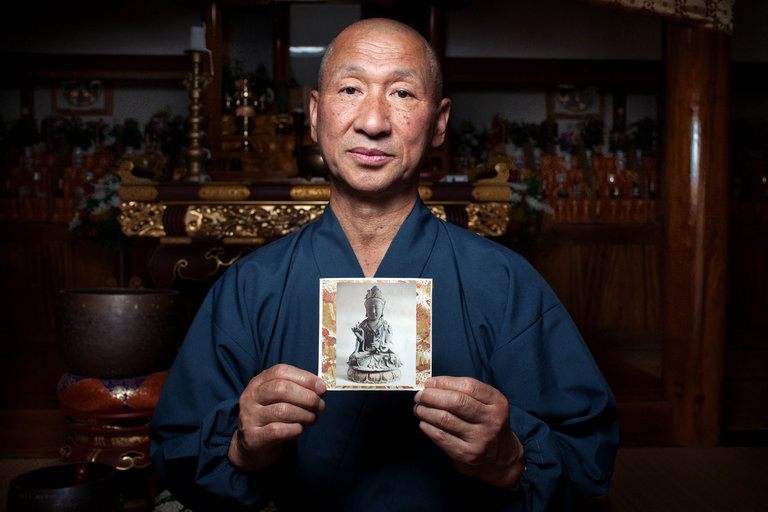South Korea Can Keep Buddha Statue Stolen From Japan

SEOUL, South Korea — A court ruled Thursday that a South Korean temple can have a Buddha statue that was stolen from a Japanese temple in 2012, on the grounds that it had been taken from Korea centuries earlier by Japanese pirates.
Japan called the ruling “regrettable” and urged the statue’s return. The dispute is being closely watched by both governments, whose relations are often roiled by historical disputes.
The 20-inch gilded bronze statue was taken from a Buddhist temple on Tsushima, a Japanese island halfway between the two countries, by South Koreans who also stole another statue from a Shinto shrine there. The thieves were caught while trying to sell the artifacts in South Korea, and the statue from the Shinto shrine was eventually returned to Japan.
But a South Korean temple, Buseoksa, which says the Buddha statue was made there in the 14th century, won a court injunction in 2013 preventing its return until it could be determined whether it had originally been brought to Tsushima legitimately.
The statue, of the Buddha in the lotus position, has been in the government’s custody since then, and on Thursday a district court in Daejeon, a city south of Seoul, ruled that it should be given to Buseoksa. The government, which was the defendant in the civil suit, did not say whether it would appeal.
Upbeat monks at Buseoksa, in the west coast city of Seosan, prepared for the statue’s homecoming. The temple’s chief monk, the Venerable Wonwoo, hailed the ruling as a milestone that should inspire South Koreans to try to bring home what he claimed were 70,000 ancient Korean artifacts that had been looted and brought to Japan. Buddhists and other South Koreans have rallied behind Buseoksa’s campaign.
The Japanese temple, Kannonji, was not a direct party to the lawsuit, but it argued at the trial that the statue had not been removed from Korea illicitly, noting that there had been legitimate trade in goods, including Buddha statues, between Korea and Tsushima in ancient times. The statue has been designated an important cultural asset in Japan.
After an investigation, South Korea’s Cultural Heritage Administration said in 2014 that it was “probable” that the statue had been taken to Japan by plunderers, though it could not reach a definitive conclusion.
Scholars supporting Buseoksa’s cause cited a document found inside the statue’s belly in 1951, which they said showed that the statue was manufactured in Seosan in the 14th century. They said it did not record a transfer of ownership to the Japanese temple, although such a document normally would.
They also presented the court with historical documents showing that parts of Korea’s west coast near Seosan had been visited by pirates from Japan during the 14th century. And they said the statue had burn damage, which they said could be a sign it had been plundered by pirates.
“There is enough reason to think that the statue belongs to Buseoksa,” the presiding judge, Moon Bo-gyeong, ruled Thursday.
In Tokyo, Chief Cabinet Secretary Yoshihide Suga called the ruling “very regrettable.” He urged South Korea to take “appropriate” action to ensure the statue’s swift return to Japan.
“The Japanese government has appealed to the Korean government through various diplomatic channels to request the return of this statue to Japan as soon as possible,” he said at a news conference.
A spokesman for the South Korean Foreign Ministry, Cho June-hyuck, said the ministry would try to resolve the matter with Japan “based on mutual trust.”
- Previous North Korean Defector Says Kim Jong-Un’s Control Is Crumbling
- Next Russia urges caution on US plan for safe zones in Syria















